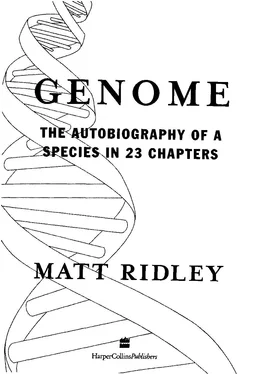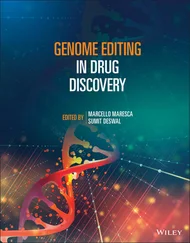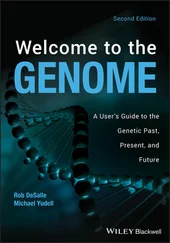Genome - Matt Ridley
Здесь есть возможность читать онлайн «Genome - Matt Ridley» — ознакомительный отрывок электронной книги совершенно бесплатно, а после прочтения отрывка купить полную версию. В некоторых случаях можно слушать аудио, скачать через торрент в формате fb2 и присутствует краткое содержание. Жанр: Старинная литература, на английском языке. Описание произведения, (предисловие) а так же отзывы посетителей доступны на портале библиотеки ЛибКат.
- Название:Matt Ridley
- Автор:
- Жанр:
- Год:неизвестен
- ISBN:нет данных
- Рейтинг книги:5 / 5. Голосов: 1
-
Избранное:Добавить в избранное
- Отзывы:
-
Ваша оценка:
- 100
- 1
- 2
- 3
- 4
- 5
Matt Ridley: краткое содержание, описание и аннотация
Предлагаем к чтению аннотацию, описание, краткое содержание или предисловие (зависит от того, что написал сам автор книги «Matt Ridley»). Если вы не нашли необходимую информацию о книге — напишите в комментариях, мы постараемся отыскать её.
Matt Ridley — читать онлайн ознакомительный отрывок
Ниже представлен текст книги, разбитый по страницам. Система сохранения места последней прочитанной страницы, позволяет с удобством читать онлайн бесплатно книгу «Matt Ridley», без необходимости каждый раз заново искать на чём Вы остановились. Поставьте закладку, и сможете в любой момент перейти на страницу, на которой закончили чтение.
Интервал:
Закладка:
So what happens when you cross a P. maniculatus mouse with a P. polionatus mouse? It depends on which species is the father and which is the mother. If the promiscuous P. maniculatus is the father, the babies are born giant-sized. If the monogamous P. polionatus is the father, the babies are born tiny. Do you see what is happening?
Paternal maniculatus genes, expecting to find themselves in a womb with competitors that are not even related, have been selected to fight for their share of the mother's resources at the expense of their co-foetuses. Maternal maniculatus genes, expecting to find embryos in their wombs that fight hard for her resources, have been selected to fight back. In the more neutral environment of polionatus wombs, the aggressive maniculatus genes from the father encounter only token opposition, so they win their particular battle: the baby is big if fathered by the promiscuous father and small if mothered by the promiscuous mother. It is a very neat demonstration of the imprinting theory.6
Neat as this tale is, it cannot be told without a caveat. Like many of the most appealing theories it may be too good to be true. In particular, it makes a prediction that is not borne out: that imprinted genes will be relatively rapidly evolving ones. This is because sexual antagonism would drive a molecular arms race in which each benefited from temporarily gaining the upper hand. A species-by-species comparison of imprinted genes does not bear this out. Rather, imprinted genes seem to evolve quite slowly. It looks increasingly as if the Haig theory explains some, but not all, cases of imprinting.
2 1 2 G E N O M E
Imprinting has a curious consequence. In a man, the maternal copy of chromosome 15 carries a mark that identifies it as coming from his mother, but when he passes it on to his son or daughter, it must somehow have acquired a mark that identifies it as coming from him: the father. It must switch from maternal to paternal and vice versa in the mother. That this switch does happen we know, because in a small proportion of people with Angelman syndrome there is nothing unusual about either chromosome except that both behave as if they were paternal. These are cases in which the switch failed to occur. They can be traced back to mutations in the previous generation, mutations that affect something called the imprinting centre, a small stretch of D N A close to both relevant genes, which somehow places the parental mark on the chromosome. The mark consists of one gene's methylation, of the kind encountered in chromosome 8.8
Methylation of the 'letter' C, you will recall, is the means by which genes are silenced, and it serves to keep selfish D N A under house arrest. But methylation is removed during the early development of the embryo - the creation of the so-called blastocyst — and then reimposed during the next stage of development, called gastrulation.
Somehow, imprinted genes escape this process. They resist the demethylation. There are intriguing hints about how this is achieved, but nothing definitive.9
That imprinted genes escape demethylation is, we now know, all that stood between science and the cloning of mammals for many years. Toads were fairly easily cloned by putting genes from a body cell into a fertilised egg, but it just didn't work with mammals, because the genome of a female's body cells had certain critical genes switched off by methylation and the genome of a male's body cells had other genes switched off - the imprinted genes. So, confidently, scientists followed the discovery of imprinting with the announcement that cloning a mammal was impossible. A cloned mammal would be born with all its imprinted genes either on or off on both chromosomes, upsetting the doses required by the cells of the animal and causing development to fail. 'A logical conse-S E X 2 1 3
quence', wrote the scientists who discovered imprinting,10 'is the unlikelihood of successful cloning of mammals using somatic cell nuclei.'
Then, suddenly, along came Dolly the cloned Scottish sheep in early 1997. Quite how she and those that came after evaded the imprinting problem remains a mystery, even to her creators, but it seems that a certain part of the treatment meted out to her cells during the procedure erased all genetic imprints.11
The imprinted region of chromosome 15 contains about eight genes. One of these is responsible, when broken, for Angelman syndrome: a gene called UBE3A. Immediately beside this gene are two genes that are candidates for causing Prader-Willi syndrome when broken, one called SNRPN and the other called IPW. There could be others, but let us assume for the moment that SNRPN
is the culprit.
The diseases, though, do not always result from a mutation in one of these genes but from an accident of a different kind. When an egg is formed inside a woman's ovary, it usually receives one copy of each chromosome, but in rare cases where a pair of parental chromosomes fails to separate, the egg ends up with two copies.
After fertilisation with a sperm, the embryo now has three copies of that chromosome, two from the mother and one from the father.
This is especially likely in elder mothers, and is generally fatal to the egg. The embryo can go on to develop into a viable foetus and survive more than a few days after birth only if the triplicate chromosome is number 21, the smallest of the chromosomes - the result being Down syndrome. In other cases the extra chromosome would so upset the biochemistry of the cells that development would fail.
However, in most cases, before that stage is reached, the body has a way of dealing with this triplet problem. It 'deletes' one chromosome altogether, leaving two, as intended. The difficulty is that it does so at random. It cannot be sure that it is deleting one of the two maternal chromosomes, or the single paternal one. Random deletion has a sixty-six per cent chance of getting one of the maternal ones, but accidents do happen. If, by mistake, it deletes the paternal 2 1 4 G E N O M E
one, then the embryo goes merrily on its way with two maternal chromosomes. In most cases this could not matter less, but if the tripled chromosome is number 15, you can see immediately what will ensue. Two copies of UBE3A, the maternally imprinted gene, are expressed, and no copies of SNRPN, the paternally imprinted gene. The result is Prader-Willi syndrome.12
Superficially, UBE3A does not look a very interesting gene. Its protein product is a type of 'E3 ubiquitin ligase', members of an obscure proteinaceous middle management within certain skin and lymph cells. Then in the middle of 1997, three different groups of scientists suddenly discovered that, in both mice and human beings, UBE3A is switched on in the brain. This is dynamite. The symptoms of both Prader-Willi and Angelman indicate something unusual about the brains of their victims. What is even more striking is that there is good evidence that other imprinted genes are active in the brain. In particular, it seems that in mice much of the forebrain is built by maternally imprinted genes, while much of the hypothalamus, at the base of the brain, is built by paternally imprinted genes.13
This imbalance was discovered by an ingenious piece of scientific work: the creation of mouse 'chimeras'. Chimeras are fused bodies of two genetically distinct individuals. They occur naturally — you may have met some or even be one yourself, though you will not know it without a detailed study of the chromosomes. Two genetically distinct embryos happen to fuse together and grow as if they were one. Think of them as the opposite of identical twins: two different genomes in one body, instead of two different bodies with the same genome.
Читать дальшеИнтервал:
Закладка:
Похожие книги на «Matt Ridley»
Представляем Вашему вниманию похожие книги на «Matt Ridley» списком для выбора. Мы отобрали схожую по названию и смыслу литературу в надежде предоставить читателям больше вариантов отыскать новые, интересные, ещё непрочитанные произведения.
Обсуждение, отзывы о книге «Matt Ridley» и просто собственные мнения читателей. Оставьте ваши комментарии, напишите, что Вы думаете о произведении, его смысле или главных героях. Укажите что конкретно понравилось, а что нет, и почему Вы так считаете.












